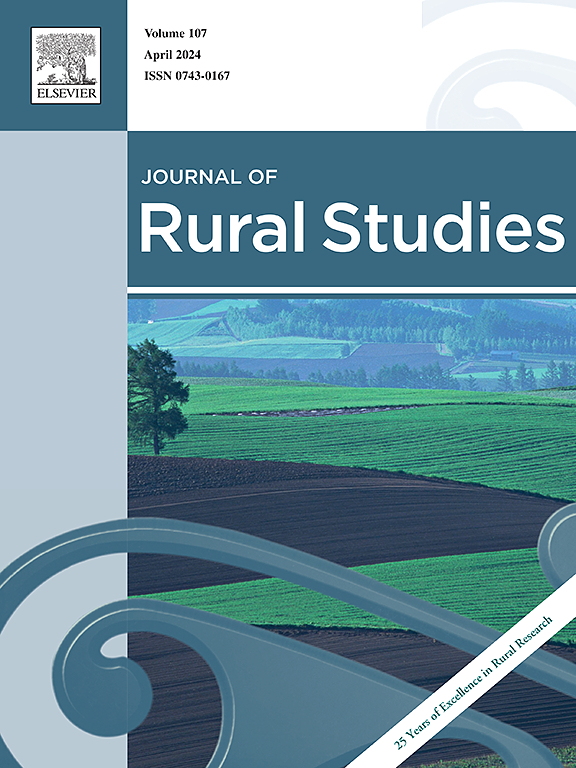A room with a blue view: The impact of Blue Economy activities on housing prices across Scottish regions
IF 5.1
1区 社会学
Q1 GEOGRAPHY
引用次数: 0
Abstract
This study examines the indirect impacts of sustainable transitions on coastal communities by analysing the relationship between the visibility of Blue Economy activity and house prices using four Scottish regions as a case example. The research employs hedonic price modelling and spatial econometrics to assess how the visibility of various Blue Economy activities, such as conservation, fossil fuel extraction, ports and aquaculture, has influenced residential property prices from 2012 to 2019. Utilising a unique database of property listings and geographic data, the analysis considers three distance bands to determine the extent to which ocean views containing different marine activities affect housing values. The findings reveal that oil and gas sites negatively impact housing prices across all distance bands and property price quartiles, consistent with existing literature on land-based oil and gas extraction. Conservation activities like Marine Protected Areas (MPAs) only affect prices positively at larger distances when spatial autocorrelation is accounted for, indicating a nuanced relationship between environmental conservation and property values. The study also highlights the complex interactions between aquaculture and housing prices, with positive effects noted at closer distances. Moreover, the analysis shows that port facilities positively influence housing prices, suggesting that accessibility to job opportunities and public services provided by ports is a valued amenity in rural, tourist-oriented regions. This study's methodological innovations contribute to a deeper understanding of the spatial effects of Blue Economy activities on housing prices, providing valuable insights for marine spatial planning and regional economic strategies in coastal areas across the world.
一间拥有蓝色景观的房间:蓝色经济活动对苏格兰地区房价的影响
本研究以苏格兰四个地区为例,通过分析蓝色经济活动可见度与房价之间的关系,考察了可持续转型对沿海社区的间接影响。该研究采用享乐价格模型和空间计量经济学来评估各种蓝色经济活动(如保护、化石燃料开采、港口和水产养殖)的可见性如何影响2012年至2019年的住宅房地产价格。利用独特的物业清单和地理数据数据库,该分析考虑了三个距离波段,以确定包含不同海洋活动的海景对房屋价值的影响程度。研究结果表明,油气场地对所有距离带和房地产价格四分位数的房价都有负面影响,这与现有的陆上油气开采文献一致。当考虑到空间自相关性时,海洋保护区(MPAs)等保护活动仅在较大距离上对价格产生积极影响,这表明环境保护与财产价值之间存在微妙的关系。该研究还强调了水产养殖与房价之间复杂的相互作用,并在近距离观察到积极影响。此外,分析表明,港口设施对房价有积极影响,这表明港口提供的就业机会和公共服务是农村旅游导向型地区的一项有价值的便利设施。本研究的方法创新有助于更深入地了解蓝色经济活动对房价的空间影响,为全球沿海地区的海洋空间规划和区域经济战略提供有价值的见解。
本文章由计算机程序翻译,如有差异,请以英文原文为准。
求助全文
约1分钟内获得全文
求助全文
来源期刊

Journal of Rural Studies
Multiple-
CiteScore
9.80
自引率
9.80%
发文量
286
期刊介绍:
The Journal of Rural Studies publishes research articles relating to such rural issues as society, demography, housing, employment, transport, services, land-use, recreation, agriculture and conservation. The focus is on those areas encompassing extensive land-use, with small-scale and diffuse settlement patterns and communities linked into the surrounding landscape and milieux. Particular emphasis will be given to aspects of planning policy and management. The journal is international and interdisciplinary in scope and content.
 求助内容:
求助内容: 应助结果提醒方式:
应助结果提醒方式:


